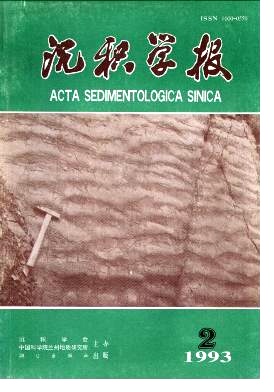Storm Deposits in Member III of Feixianguan Formation,Triasic Series in Zhongliang Mountain,Chongqing
- Received Date: 1992-02-24
- Publish Date: 1993-06-10
Abstract: Storm current is a special current caused by strom in littoral and sea bottom which has both characters of gravitationsl and tractive current. The limited base effected by storm is called as storm wave base. When sediments deposit on the base,it would be scoured,undercut and disturbed then high density current is formed. When storm fade,grains drop quickly. The sediment and sedimentary structures composition caused by the process is called as tem-pesitites. The storm deposits characters in Paleozoic and Mesozoic marine limestome in Sichuan Basin are being continously studied. The authors first discovered that there are two rather better sequences of tempestites and several layers of para-tempestites in the Lower Triasic Feixianguan Formation (Member 3) in Zhongliang Mountain,Chongqing. The Member 3 with thickness of 102m, is mainly biturbation limestone, micritic limestone and oosparite, belong to open platform facies and shallow facies under open sea shelf envioron-ment. The tempestites discussed was found respectively in the bottom and middle - upper part of the section which thickness is, lower sequences 1. 5m, upper sequences 2. 5m. and para-tempstites 10m. n the tempestites of the area,there are aboundant basal and sedimentary structures as follow mainly: 1. Basal scouring and filling structure:includ crater,qully mold,pocket mould and bowl mould,etc. especially pocket mould tipical with shapes of box,bully and ripple-like. 2. Knotty structure : caused by unhomogeneous distribution of grains and there is obvious difference between knotty and matrix. 3. Swirling structure:developed in para-tempestites,is involution and fold of weakly soli-dated limestone as pushed by storm wave. 4. Massive bedding:one of an important characters of tempestites and with the change of current status there is normally graded bedding developed. 5. Hummocky cross-bedding and bidirectitional cross-bedding:formed on the effected by oscillatory current especially the former is a very important character of storm deposits in the area. 6. Lamination cross-bedding and horizontal bedding:developed in the storm fadding period. The distribution of ooide makes the micro layers and lamina very clear especially in upper sequences. The authors concluded the tempestites sequences of the area as 6 members i. e., A, B, C,D,E and F. Comparision with Aigner sequences, we added the member of hummocky cross-bedding,and also discussed the difference between tempesites sequences and turbidity sequences of Bouma in aspects of sedimentary structures and lithological facies of storm deposits of the member 3,Feixianguan Formation,we divided the tempesites types as follows: 1. Proximal tempestites (lower sequences): lack of one or two members, complicated basal structures,thinner tempestites layer unit,indicates that perhaps sedimentary area located in the storm active centre. 2. Distal tempestites (upper sequences) :whole sequences thicker upper members,it indicates that storm current which has tractive current character kept a long period. 3. Para-tempestites: lack of majority of members, indicates that storm frequently impulsed and tempestites was reformed strongly. Conclusion: 1. There are a few layers of storm diposits in member 3 of Feixiaguan Formation in Zhongliang Mountain area and we could conclude a rather better sequences. 2. Tempestites sequences could mainly be divided into two types,i. e., proximatl and distal tempestites. 3. Both grains and matrix in storm diposits are from the same source. The former was from inner-clastic of limestone and the latter from inner-basin' s carbonate mud. They mixed and sedimented between normal wave base and storm wave base.
| Citation: | Hu Zhishui, Zhao Yongsheng. Storm Deposits in Member III of Feixianguan Formation,Triasic Series in Zhongliang Mountain,Chongqing[J]. Acta Sedimentologica Sinica, 1993, 11(2): 84-90. |






 DownLoad:
DownLoad: